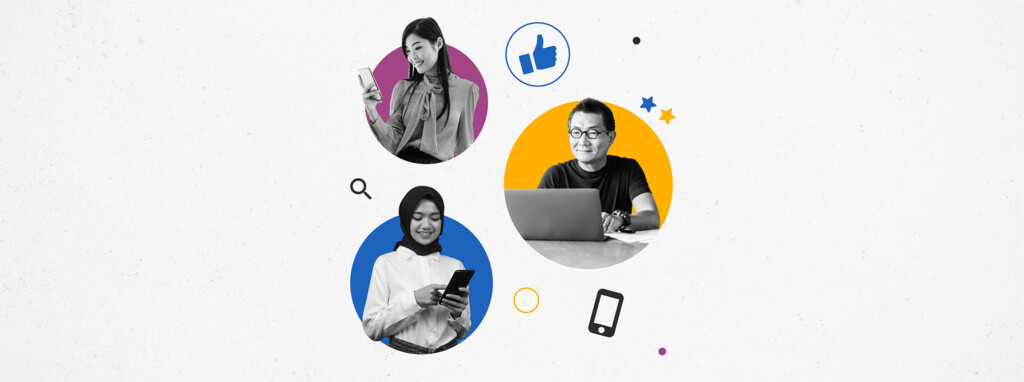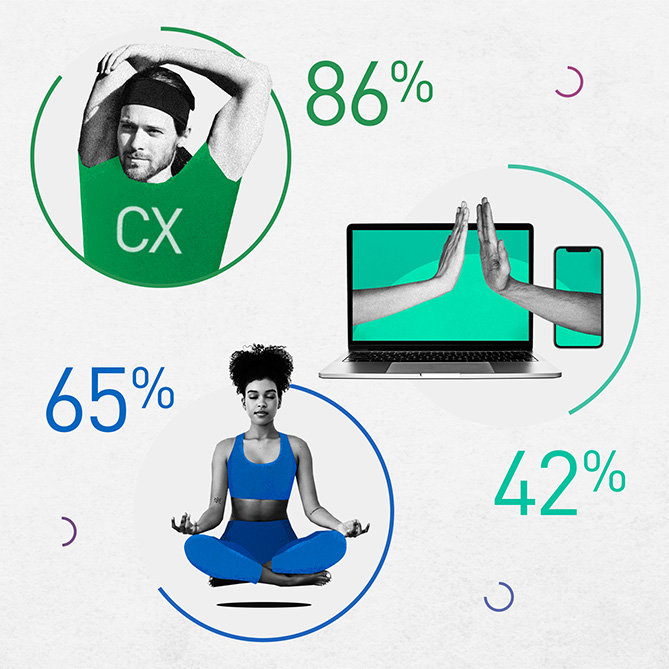Dark themes have become a hot design topic over the past few years, with both Apple and Google making dark modes native to their UI. So what is dark mode, and should finance brands be including this approach in their native design? We investigate key features, benefits and value for global finance brands.
Available on an increasing number of apps and operating systems, dark mode allows the user to switch colours from a traditional light background to a darker background. Some of the biggest brands in the world are following this trend including Apple, Google and Instagram. With the help of The Dubs senior digital designer, Tom Bradshaw, we investigate why dark mode has become so popular, and what it could mean for finance brands.
The Benefits of Dark Mode
There are two main benefits to using dark mode; the first is user comfort. At the recent Google I/O, Sameer Samat, Google’s VP of product management for Android and Play described standard mode as ‘blinding’, “Everyone can relate to being in a room where the lights are turned down and you’ve got this white screen blinding you”. As Bradshaw explains, Dark mode provides relief for the user. “Dark mode reduces eye strain and means it’s more comfortable to use in dark environments or at night. This is why apps like Netflix etc. are using dark mode.”
The second benefit relates to battery life. Google has confirmed that using dark mode is a huge help for battery life. Bradshaw adds: “Dark mode is particularly good for apps that are used over a long period of time such as analytics programs, or for gaming. It extends the battery life as it uses less power to light the screen.”
It’s not just a case of inverting white to black.
What are the key features involved in designing for dark mode?
Designing for dark mode can be tricky. Bradshaw highlights that ”It’s not just a case of inverting white to black. Some of the design tricks we use on white designs wouldn’t have the same effect on a dark background.” Bradshaw’s key design pointers are:
- Avoid using pure black
Pure black (#000000) can be painful to look at. Use a dark grey instead, Google Material recommends #121212, this will enable white text to be readable. - Avoid darker colours
Use lighter tones, such as colours 200-50 in Google Material, because they will read better on darker backgrounds. Avoid using pure white as this will also cause eye strain on a darker background. - Hierarchy
With dark design, we cannot convey hierarchy in the same way we do with light design. Using shadows no longer has the desired effect. So instead think about using lighter greys to create focus in your design. - Dark theme colours don’t have to match light theme colours
A dark theme can communicate different emotions to light mode. So it’s best to think about a slightly different approach to your dark design as some of the subtleties of your light design will be lost. - Consider logos carefully
Bradshaw’s work involves integrating a lot of third-party logos, however, getting access to a logo you can work with can be difficult at times. If the logo doesn’t have an on-black version or you are unable to edit it, it can make working with it in dark mode tricky. An easy solution is to simply use a white container. This keeps the design clean and consistent.
Why should finance brands consider designing for dark mode?
Bradshaw suggests that users engaging with finance brands will appreciate being provided with the design alternative. “It’s a simple toggle for the users, and could encourage greater interaction.” He specifies, however, that for finance brands, dark mode is most appropriate for use with their apps rather than their website. “Dark mode isn’t suitable for text and data-heavy uses, which is the case on finance brands’ websites,” he says. “Where it would prove useful would be for their apps. For example, I use the CommBank app a lot, it’s great, clean modern and simple to use but currently there is no dark mode option.”
Providing a dark mode option could also have an overall benefit on ROI for finance brands with a new design providing a more dynamic, striking experience. The sense of luxury and prestige provides an improved user experience, which correlates to improved customer engagement.
What should finance brands consider before investing in dark mode design?
Bradshaw is quick to emphasise that although dark mode has many benefits, finance brands shouldn’t jump on the bandwagon for the sake of it. Sure it’s on trend and highly popular but as he explains, “Ask yourself if it really will add to the usability of your design.”
If you do decide to invest in dark mode design, testing is vital to ensure your brand meets accessibility guidelines and colour contrast standards. Bradshaw recommends following the Google Material recommendations of a contrast level of at least 15.8.1 between text and background. This can be tested at WebAIM.
Whether your brand decides to invest in dark mode design or not, finance brands should always stay abreast of changing design trends and opportunities to improve their user experience. At The Dubs, we’re passionate about the latest in design. If your website or digital assets need a refresh, get in touch.









